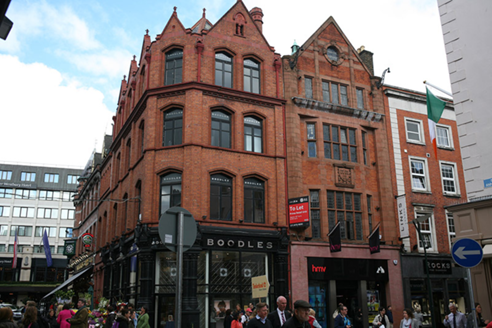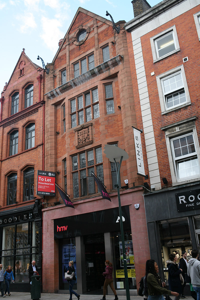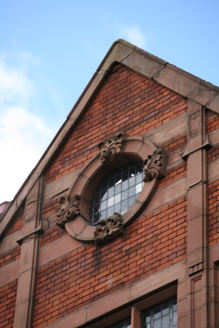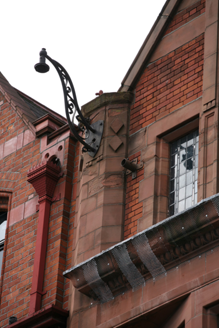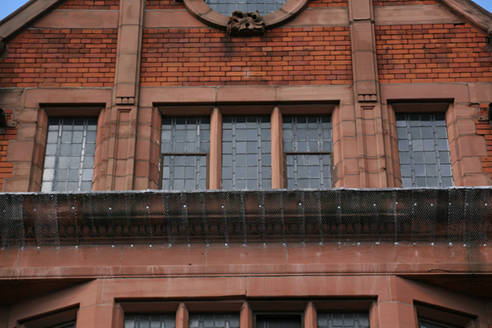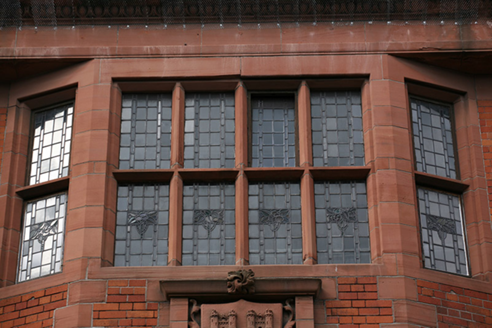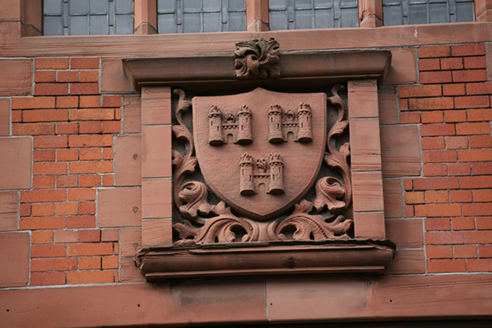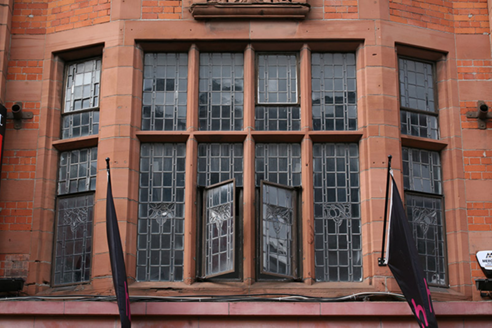Survey Data
Reg No
50920031
Rating
Regional
Categories of Special Interest
Architectural, Artistic
Previous Name
Grafton Cinema originally Grafton Street Picture House
Original Use
Cinema
In Use As
Shop/retail outlet
Date
1905 - 1915
Coordinates
315911, 233730
Date Recorded
22/09/2015
Date Updated
--/--/--
Description
Attached gable-fronted single-bay four-storey with attic Tudor-Bethan former cinema, built 1911, with recent shopfront spanning ground floor. Now in use as shop. Roof hidden behind front (east) gable with saddleback red sandstone coping and central roundel window with sandstone surround and four stiff-leaf keystones. Machine-made red brick walls laid in Dutch bond with flush red sandstone ashlar courses and two octagonal-plan red sandstone piers rising from first floor to gable, each supporting decorative iron lamp bracket. Square-headed window openings with chamfered red sandstone surrounds and sills, sandstone transoms and mullions and original decorative leaded casement windows. First and second floor windows form shallow canted-bay windows set within recessed panels, having carved sandstone panel with the Dublin coat of arms below second floor. Moulded lead-lined hood cornice embellished with egg-and-dart moulding above second floor. Recent glazed shopfront coloured masonry surround. Fronting onto Grafton Street and forming part of group of varying building types lining west side of street.
Appraisal
A most appealing building executed to the designs of Richard Caulfield Orpen, in the Tudor-Bethan style that flourished in the early twentieth century. The Grafton Street Picture House opened on 17 April 1911 with the silent film 'After Fifty Years'. Its capacity was expanded in 1913 to 620 seats. In 1929 Robinson & Keefe carried out further alterations, including the installation of a sound system. It finally closed as a cinema on 1 December 1973. Casey (2005) states that a good fibrous plaster ceiling survives on the first floor. The rich façade decoration adds much interest to the streetscape. A building of significance for the quality of its architecture, and its contribution to the history of cinema in the city.
